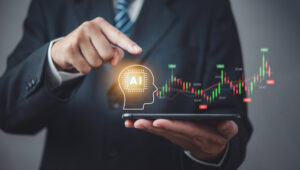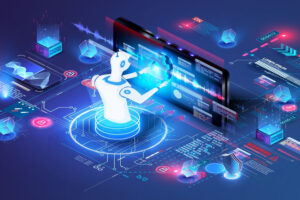In the ever-evolving world of content creation, video editing plays a pivotal role in delivering engaging and visually captivating stories. As the digital landscape expands, creators are faced with a significant choice: embracing AI for video editing or sticking with traditional methods. The debate of AI vs traditional video editing is not just about technology, but about the future of storytelling itself.

Understanding AI in Video Editing
AI or Artificial Intelligence, has transformed various industries, and video editing is no exception. AI-powered tools automate complex tasks, such as scene detection, color correction, and even editing itself, by analyzing data patterns and learning from them. These tools are designed to save time and enhance the editing process, making them an attractive choice for modern creators.
Traditional Video Editing: The Classic Approach
Traditional video editing relies on manual techniques where editors meticulously cut, trim, and arrange footage. This approach involves a deep understanding of storytelling, pacing, and human emotion. Its a craft honed over decades, requiring skill, patience, and a keen eye for detail.
Efficiency and Speed
When comparing AI vs traditional video editing, one of the major differences lies in efficiency and speed. AI tools can significantly reduce editing time by automating repetitive tasks and providing instant suggestions. For example, an AI might automatically generate a rough cut of a video, which the editor can then refine. This is particularly beneficial for creators dealing with tight deadlines.
The Human Touch
Despite AI’s capabilities, the human touch is irreplaceable. Traditional editing allows for a deeper connection with the content, as editors infuse their personal style and creativity into the project. This emotional engagement often leads to more impactful storytelling, something AI still struggles to replicate.
Creativity and Innovation
AI in video editing offers innovative features, like real-time effects and automated corrections, which can inspire creativity. However, traditional editing provides a blank canvas, encouraging editors to experiment and push boundaries. Balancing these elements is crucial for creators seeking to innovate while maintaining artistic integrity.
Learning Curve
Adopting AI tools requires a learning curve. Creators must familiarize themselves with new software and technologies, which can be daunting. Conversely, traditional editing demands years of practice but offers a more intuitive understanding of film language and techniques.
Cost Considerations
Cost is another factor in the AI vs traditional video editing debate. AI tools often require subscriptions or significant upfront investments. Traditional editing, while requiring investment in software and hardware, doesnt involve ongoing costs to the same extent, making it a viable option for budget-conscious creators.
Accessibility
AI tools have democratized video editing, making it accessible to beginners and small creators. Platforms like AI video generators offer user-friendly interfaces that simplify complex tasks. However, mastering traditional editing can open more doors in professional filmmaking and videography.
Impact on Jobs
The rise of AI in video editing has sparked concerns about job displacement. While AI can handle mundane tasks, it cannot replace the creativity and decision-making skills of human editors. The future likely holds a hybrid model where AI assists, rather than replaces, human editors.
Collaboration and Workflow
AI tools can enhance collaboration by streamlining workflows and enabling teams to work more efficiently. Traditional editing, however, fosters direct communication and teamwork, which are essential in larger productions.
Future Prospects
As technology advances, the future of video editing will likely blend AI and traditional methods. This hybrid approach could harness the strengths of both, offering creators unprecedented control and efficiency.
Choosing the Right Approach
Ultimately, the choice between AI vs traditional video editing depends on the creator’s goals, resources, and personal preferences. Those looking for speed and efficiency might lean towards AI, while purists who value craftsmanship may prefer the traditional route. Exploring both might be the best way to develop a versatile skill set.

FAQs
Can AI replace human video editors?
No, AI is a tool that assists with efficiency but cannot replicate the creativity and emotional insight of human editors.
Is traditional editing still relevant?
Yes, traditional editing remains crucial for those seeking deeper storytelling and creative control.
Are AI tools difficult to learn?
AI tools have a learning curve but are designed to be user-friendly, especially for beginners.
For more insights on AI in creative fields, check out this AI in Graphic Design article.







